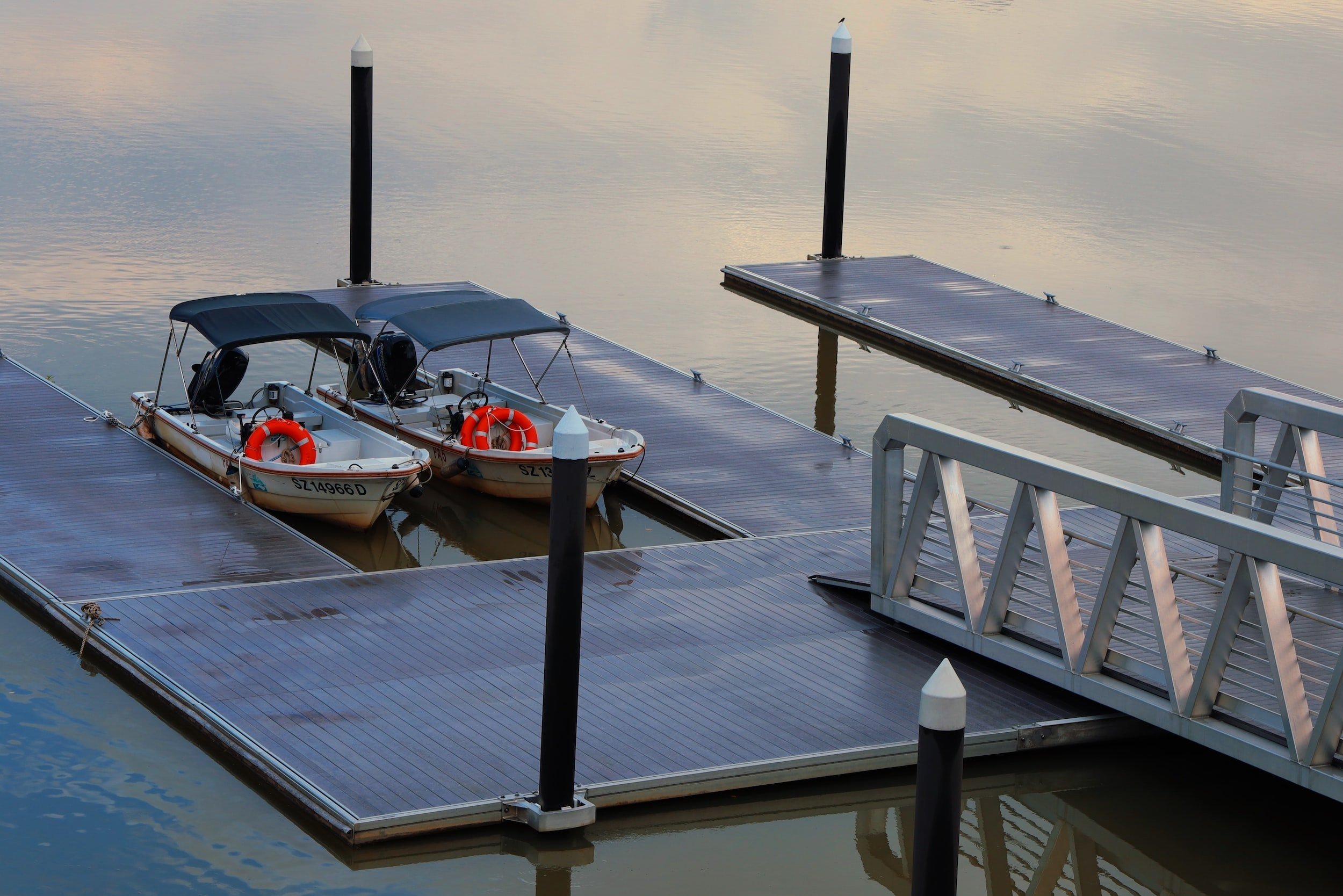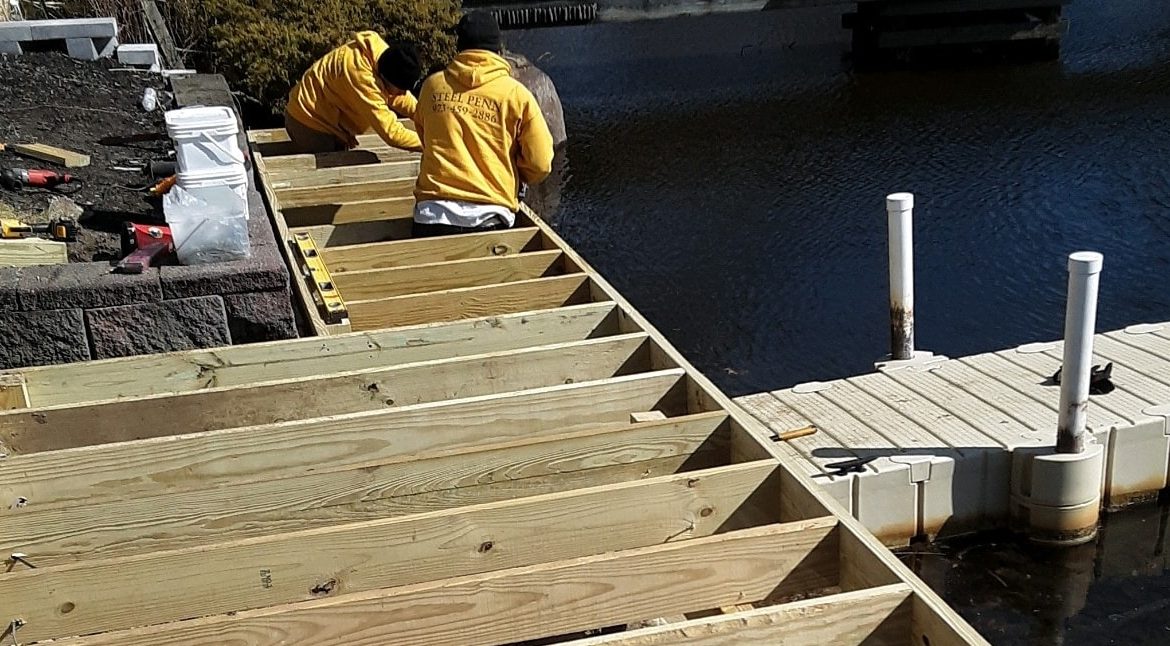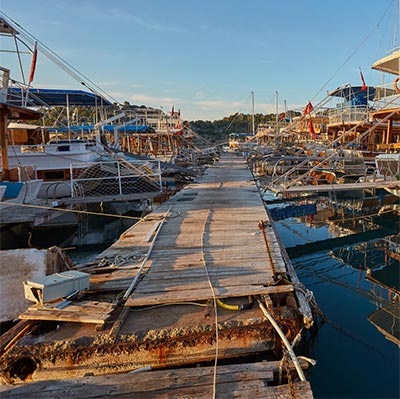Efficient Dock Fixing Techniques: Making Certain Architectural Honesty
Making certain the architectural stability of docks with effective repair techniques is paramount for the long life and safety and security of aquatic facilities. This involves a multi-faceted method beginning with comprehensive assessments utilizing sophisticated technologies like finder tools and from another location operated vehicles (ROVs) to spot both noticeable and hid damages. Subsequently, selecting the appropriate fixing products, such as corrosion-resistant alloys and composite materials, is critical for longevity. Architectural reinforcement approaches, including the implementation of cross-bracing systems and load-distribution plates, play an essential role in mitigating stress and anxiety points. The value of these methods becomes noticeable when checking out innovative repair work approaches and preventative maintenance approaches.
Assessing Dock Damage
Analyzing dock damage is a critical primary step in ensuring the structural stability and safety and security of any kind of docking facility. This initial assessment includes a thorough inspection to identify both visible and concealed problems. Secret elements to check out consist of the dock's foundation, pilings, outdoor decking, and equipment. Each part has to be scrutinized for indicators of wear, rot, deterioration, or other types of deterioration that might jeopardize the architectural honesty.
Architectural designers or certified assessors generally do these evaluations making use of specialized strategies and tools. Undersea evaluations might use finder equipment or remotely operated lorries (ROVs) to identify immersed damage. Over water, aesthetic evaluations are complemented by utilizing dampness meters and other analysis tools to uncover underlying concerns not promptly visible to the naked eye.

Deciding On Fixing Materials
Picking the proper repair products is a critical step in the dock restoration procedure, one that directly influences the longevity and performance of the repaired structure. Material selection need to be driven by factors such as ecological conditions, load-bearing needs, and compatibility with existing dock parts.
Along with wood, composite products are progressively preferred as a result of their sturdiness and low upkeep needs. Compounds, typically made from a mix of plastic and wood fibers, use excellent resistance to rot, insects, and UV damages. For metal docks, selecting corrosion-resistant alloys such as galvanized steel or marine-grade aluminum is necessary to avoid rust and make certain structural stability in saline water problems.
Epoxy materials and marine-grade sealers are vital for fixing fractures and securing joints, giving a water-proof obstacle and boosting the dock's overall stamina. By carefully selecting top notch materials, dock fixings can attain lasting results, thus safeguarding against future destruction and ensuring risk-free, dependable usage.
Structural Support Techniques
Reliable structural reinforcement methods are critical in guaranteeing the security and longevity of dock fixings. This technique is particularly effective for anchors subjected to heavy loads or rough ecological conditions.
Another necessary strategy is the application of fiber-reinforced polymers (FRP) These products provide high strength-to-weight ratios and excellent resistance to deterioration, making them suitable for strengthening wooden or concrete anchors. FRP can be used in strips or sheets and adhered with epoxy materials to enhance architectural stability.
Supporting and securing systems likewise play a critical function in structural support. Cross-bracing, using metal or wood beams, can neutralize lateral pressures, lowering persuading and activity. Anchoring systems, such as helical piers or driven piles, supply a secure structure by transferring tons to deeper, a lot more stable dirt layers.
Finally, the integration of load-distribution plates can aid distribute weight more evenly throughout the dock's surface, reducing local More Info anxiety points. These methods collectively ensure that anchors continue to be robust and secure, qualified of withstanding the rigors of their operational atmosphere.
Advanced Fixing Methods

Another advanced method includes undersea welding, which enables repairs to be carried out without the need to dewater the location. This method is particularly beneficial for addressing structural problems in immersed dock parts, making certain marginal interruption to procedures. Boosted welding techniques, coupled with robotic systems, supply accuracy and dependability, thereby prolonging the lifespan of the dock.
In addition, cathodic protection systems are applied to stop deterioration in metal dock frameworks. By utilizing sacrificial anodes or amazed current systems, these strategies effectively minimize the electrochemical procedures that result in product damage.
Finally, progressed monitoring modern technologies, such as architectural health surveillance (SHM) systems, offer real-time data on the problem of dock structures. These systems make it possible for positive maintenance and prompt interventions, ultimately making certain the long-lasting structural stability of the dock.
Maintenance and Avoidance
Maintenance and prevention are basic ideas that underpin the durability and safety and security of dock frameworks. Regular assessments are critical, permitting early discovery of deterioration, possible weaknesses, and environmental influences. A proactive strategy, entailing regular look for rust, rot, and architectural changes, reduces pricey repair services and prolongs the dock's operational life.
Safety nets need to include using safety finishings to metal elements to guard against rust and making use of cured wood continue reading this to resist decay. Furthermore, making certain appropriate water drainage and ventilation can avoid water build-up, which is an usual reason for structural deterioration. Including top quality products and adhering to producer guidelines during building and repair stages also play vital roles in enhancing durability.

Educating workers in dock maintenance ideal methods makes certain constant application of preventative procedures. Leveraging technological advances, such as drones for inspections and sensing units for real-time tracking, can even more improve maintenance initiatives. By prioritizing maintenance and avoidance, dock owners can guarantee structural integrity, operational safety and security, and cost-efficient administration over the dock's lifespan.
Conclusion
In final thought, maintaining the structural honesty of aquatic facilities necessitates thorough dock repair methods. Advanced repair strategies, combined with regular maintenance techniques, guarantee the dock stays secure and functional under varied ecological problems.
Guaranteeing the architectural stability of anchors via reliable fixing techniques is paramount for the longevity and safety and security of marine facilities.Picking the suitable repair materials is a critical step in the dock restoration process, one that straight affects the long life and efficiency of the fixed framework.Efficient structural reinforcement strategies are critical in guaranteeing the stability and long life of dock fixings. By focusing on maintenance and prevention, dock proprietors can make certain architectural stability, operational safety, and cost-effective management over the dock's life-span.
In verdict, preserving the structural integrity of aquatic centers requires comprehensive dock repair strategies.